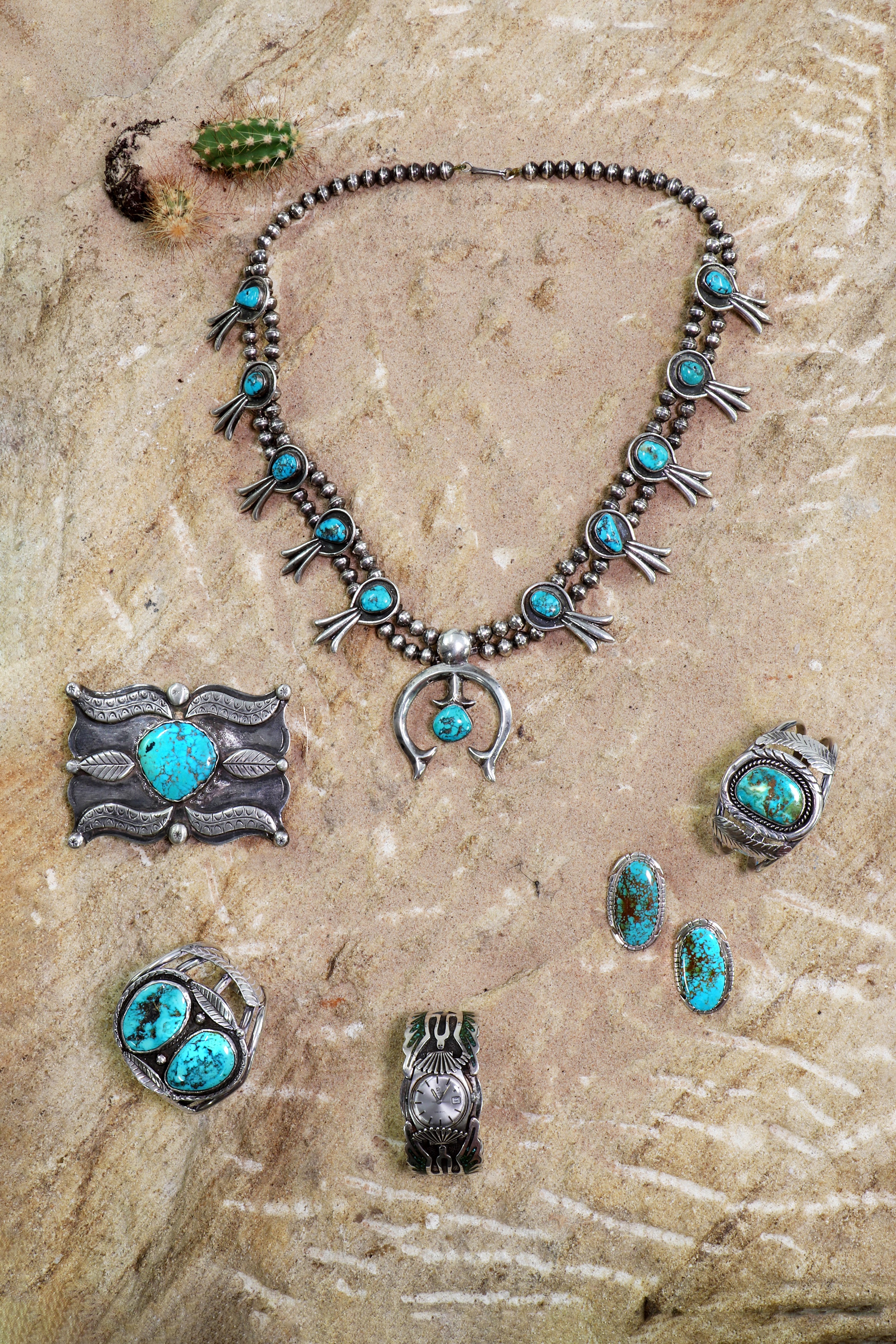

When a local private vendor approached us with a collection of Navajo Jewellery for inclusion in our forthcoming auction of Fine Jewellery and Watches, we felt compelled to delve deeper into the history of the craft…
The Native American Navajo tribe’s tradition of jewellery making dates back to the 19th century when tribe members began working with silver acquired from the Spanish.
Atsidi Sadi is widely believed to be the first Navajo to learn the craft of silversmithing, evolving his primary skill of blacksmithing to work with the metal in as early as 1860. The earliest items to have been discovered are concho belts made from hammered Mexican or U.S. silver coins, bracelets and necklaces, but as the tribe perfected their craft, they expanded to produce a full range of decorative jewellery.

Pictured clockwise from top:
Lot 275 - A silver Navajo turquoise squash blossom necklace, estimate £400-600
Lot 277 - A silver Navajo torque style cuff bangle, together with a pair of silver Navajo earrings, estimate £100-150
Lot 279 - A silver Navajo bangle, fitted with a ladies' stainless steel Omega automatic watch head, estimate £100-150
Lot 278 - A silver Navajo turquoise set torque bangle or cuff, estimate £150-250
Lot 276 - A silver Navajo turquoise set belt buckle, c.1970, estimate £200-400
Turquoise began to appear in Navajo Indian jewellery in around 1880, believed to have been sourced from the Santo Domingo tribe, and by 1885, the gemstone was in high demand. One story goes that the Ancient Native Americans believed turquoise to be pieces of the sky. In prehistoric times it was mined for adornment purposes – to produce drilled beads and ornaments. It remains popular to this day due to its unique hue and patterning.
When tourism elevated in the 1920s, visitors to the area were keen to bring back a piece of Navajo jewellery as a souvenir. Particularly popular were squash blossom necklaces, with their hallmark tri-petal silver beads. Supposedly, the shape of these beads was inspired by the Spanish design of a pomegranate. The centrepiece of a squash blossom necklace is the naja crescent-shaped pendant. Worn for beauty and pride - the crescent did not necessarily symbolise a respect for Christianity or the Moorish influence on the Spanish from whom the Navajo people borrowed the symbol.
Today’s Native American Navajo jewellery encompasses both tribal and Spanish designs, combining the traditional and the contemporary to transcend old styles.
Lots 272-279 – Fine Jewellery & Watches, Tuesday 27 July
For more information about the collection and the forthcoming sale, please contact:
Catriona Smith
catrionasmith@sworder.co.uk | 01279 817778
Sworders feel privileged to be entrusted to disperse this select group of items from the deeply cherished personal collection of the late Hermann Baer (1898-1977), including antique Italian maiolica and German faience.
8 May 2024
The Homes & Interiors Department is delighted to offer items from one of London’s most exclusive areas, Knightsbridge, in their 14 May sale.
7 May 2024
Following on from the hugely successful sale of the contents of the late Maurice ‘Dick’ Turpin’s Barons Keep residence earlier this year at Sworders, we are excited to unveil further of his treasures in our forthcoming Fine Jewellery sale on Tuesday 21 May.
2 May 2024